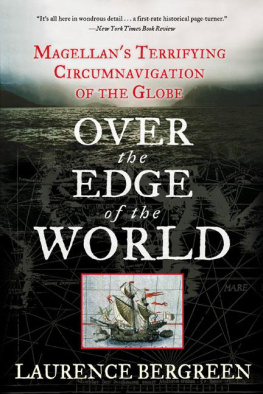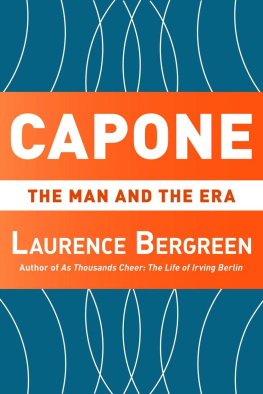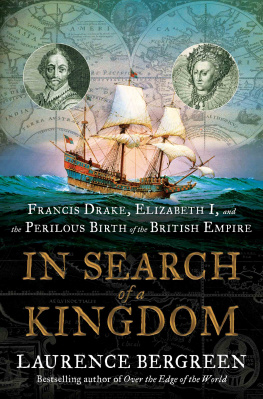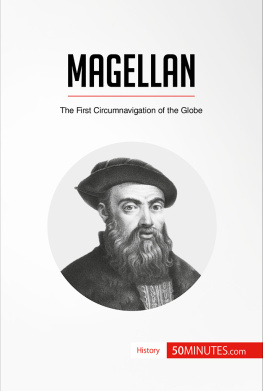Laurence Bergreen - Over the Edge of the World: Magellens Terrifying Circumnavigation of the Globe
Here you can read online Laurence Bergreen - Over the Edge of the World: Magellens Terrifying Circumnavigation of the Globe full text of the book (entire story) in english for free. Download pdf and epub, get meaning, cover and reviews about this ebook. year: 2003, publisher: HarperCollins, genre: History. Description of the work, (preface) as well as reviews are available. Best literature library LitArk.com created for fans of good reading and offers a wide selection of genres:
Romance novel
Science fiction
Adventure
Detective
Science
History
Home and family
Prose
Art
Politics
Computer
Non-fiction
Religion
Business
Children
Humor
Choose a favorite category and find really read worthwhile books. Enjoy immersion in the world of imagination, feel the emotions of the characters or learn something new for yourself, make an fascinating discovery.
- Book:Over the Edge of the World: Magellens Terrifying Circumnavigation of the Globe
- Author:
- Publisher:HarperCollins
- Genre:
- Year:2003
- Rating:4 / 5
- Favourites:Add to favourites
- Your mark:
Over the Edge of the World: Magellens Terrifying Circumnavigation of the Globe: summary, description and annotation
We offer to read an annotation, description, summary or preface (depends on what the author of the book "Over the Edge of the World: Magellens Terrifying Circumnavigation of the Globe" wrote himself). If you haven't found the necessary information about the book — write in the comments, we will try to find it.
In 1519 Magellan and his fleet set sail from Seville, Spain, to find a water route to the Spice Islands in Indonesia, where the most sought-after commodities -- cloves, pepper, and nutmeg -- flourished. Most important, they were looking for a passageway, a strait, through the great landmass of the Americas that would lead them to these fabled islands. Laurence Bergreen takes readers on board with Magellan and his crew as they explore, navigate, mutiny, suffer, and die across the seas. He also recounts the many unusual sexual practices the crew experienced, from orgies in Brazil to bizarre customs in the South Pacific. With a fleet of five ships and more than two hundred men, they had set out in search of the Spice Islands. Three years later they returned with an abundance of spices from their intended destination, but with just one ship carrying eighteen emaciated men. They suffered starvation, disease, and torture, and many died, including Magellan, who was violently killed in a fierce battle.
A man of great tenacity, cunning, and courage, Magellan was full of contradictions. He was both heroic and foolish, insightful yet blind, a visionary whose instincts outran his ideals. Ambitious to a fault and not above using torture and murder to maintain control of his ships and sailors, he survived innumerable natural hazards in addition to several violent mutinies aboard his own fleet -- and it took no less than the massed forces of fifteen hundred men to kill him.
This is the first time in nearly half a century that anyone has attempted to narrate the complete story of Magellans unprecedented circumnavigation of the globe -- to tell this truly gripping and profoundly important story of heroism, discovery, and disaster. A voyage into history, a tour of the world emerging from the Middle Ages into the Renaissance, an anthropological account of tribes, languages, and customs unknown to Europeans, and a chronicle of a desperate grab for commercial and political power, Over the Edge of the World is a captivating tale that rivals the most exciting thriller fiction.
Laurence Bergreen: author's other books
Who wrote Over the Edge of the World: Magellens Terrifying Circumnavigation of the Globe? Find out the surname, the name of the author of the book and a list of all author's works by series.










